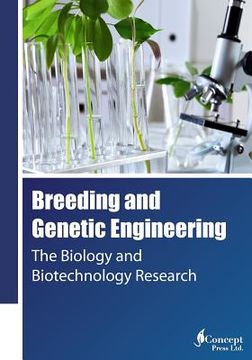Synopsis "Breeding and Genetic Engineering: The Biology and Biotechnology Research"
Since the first genetically modified crop plant was produced in 1982, the discovery and improvement of plants and crops species based on breeding and genetic engineering has never been stopped. This book focuses on various aspects of plants genetics and plant breeding, molecular biology crop reproduction, soils and plant nutrition, and environmental related issues. It does not only highlights the current research issues in the area of biology but also the development issues of plants and crops in biotechnology. This book is recommended for experts in the field of botany, agriculture, and genetics. Chapter 1 studies the swelling and microstructure of Tacupeto F2001 (a spring wheat variety in Northern Mexico) arabinoxylans gels. By using immersion in liquid nitrogen (fast congelation) before lyophilization, Tacupeto F2001 arabinoxylans gels present cells average inner dimensions lower than those reported by using slow congelation. Chapter 2 reviews studies in humans and animals in order to evaluate the use of lapachol and its derivatives as a therapeutic intervention in cancer patients. Chapter 3 study the taxonomy and phylogeny of Brazilian cultivars of Colocasia esculenta. Analysis of the chloroplast genome sequences such as rbcL and pbsA-trnH can be a valuable tool in establishing the phylogenetic analysis and variability of taro cultivars grown in Brazil. Chapter 4 entails the presence of toxic elements (Cr, Co, Ni, Cd, Pb, As, Cu, Zn, Mn) in Rice of Bangladesh, which is the staple food of the country. In this chapter the possible source of toxic element which can increase the concentration in rice like water from the rice field, soil where rice plant grown were also analysed and possible potential risk of those elements to human health was also calculated to give a picture of the present status of rice in Bangladesh. Chapter 5 discusses the effects of magnetic field on crop plants. Magnetic field may provide a feasible non-chemical solution in agriculture, meanwhile may offer advantages to protect environment and safety for the applicator.

